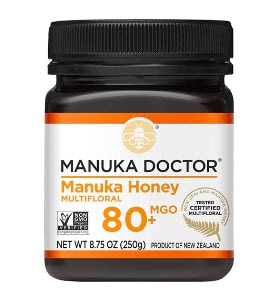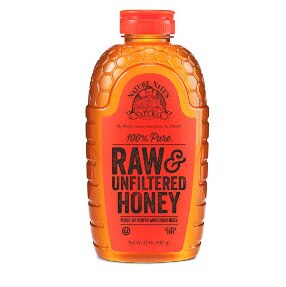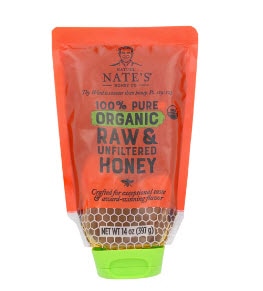In her iconic book Silent Spring, published in 1962, biologist Rachel Carson argued against the widespread use of pesticides in the 20th century, arguing that these chemicals threaten our natural environment and poison animals and humans alike. She advocated stricter regulation of pesticides by the US government, and the use of natural rather than chemical systems in agriculture.
Carson believed that chemical companies and government organizations like the Department of Agriculture and the Food and Drug Administration failed to advise the American people of the dangers of pesticides, approving them for commercial use even when evidence suggested that they can cause paralysis, infertility, cancer, and death.
Although Carson’s message was widely condemned by those very chemical companies, her book has been credited as an inspiration for the environmentalist movement of the 1970s, the formation of the US Environmental Protection Agency, and the banning of the pesticide DDT. We now see that Carson’s early predictions were chillingly accurate as we observe the increasingly dire plight of bees and other pollinators facing dangerous population declines due to global warming, toxic pesticides, biodiversity loss, and other factors.
Why are pollinators so important?
Honeybees, birds, bats, bats, butterflies, moths, flies, beetles, wasps, and even small mammals have the unique ability to transfer pollen between flowers, which is vital as many plants cannot reproduce without the help of pollinators. In fact, according to the United States Department of Agriculture (USDA), “three-fourths of the world’s flowering plants and about 35 percent of the world’s food crops depend on animal pollinators to reproduce.”
These natural allies help ensure that we can continue to enjoy fruits, veggies, nuts and seeds on our daily menus by providing their invaluable services to over 180,000 different plant species and more than 1200 crops. Pollinators are, in fact, integral to our nation’s bottom line, adding 217 billion dollars to the global American economy! While all pollinators play vital roles, honeybees−arguably the most endangered among them−stand out as exemplary.
Did you know that seventy-five percent of all food crops rely primarily on honeybees? Indeed, these buzzing heroes are responsible for up to 5.4 billion dollars in agricultural productivity in the United States. And yet, according to the Center for Biological Diversity, more than half of North America’s 4,000 native bee species are in decline, with 1 in 4 species at risk of extinction.
The number of working bee colonies provide a critical metric of crop health. In the U.S., the number of bee colonies has declined by 90 percent since 1962 among crops that require bee pollination. The bees simply cannot keep pace with the winter die-off rates and habitat loss. This dire situation has ushered in an alarming new syndrome: Colony Collapse Disorder (CCD), a combination of factors that cause bee colonies to rapidly decline. According to the Environmental Protection Agency (EPA), CCD is due to:
- Pesticide poisoning through exposure to chemicals applied to crops or for in-hive insect or mite control.
- Stress to bees due to transportation to multiple locations across the country for providing pollination services.
- Increased losses due to the invasive varroa mite (a pest of honeybees).
- Changes to the habitat where bees forage.
- Inadequate forage/poor nutrition.
- Diseases such as Israeli Acute Paralysis virus and the gut parasite Nosema.
- Potential immune-suppressing stress on bees caused by one or a combination of factors identified above.
As Greenpeace research suggests, worldwide bee colony collapse is not quite the mystery the chemical industry claims it to be. There is solid evidence that bees are dying from a variety of factors—pesticides, drought, habitat destruction, nutrition deficit, air pollution, global warming and more, and that these causes are often interrelated. There is no denying that humans are primarily responsible for the two most prominent causes of bee fatalities: pesticides and habitat loss.
Biologists have found more than 150 different chemical residues in bee pollen, a deadly “pesticide cocktail” according to University of California apiculturist Eric Mussen. Yet, the chemical companies Bayer, Syngenta, BASF, Dow, DuPont and Monsanto appear baffled at the systemic complexity of this complicated “mystery,” and they advocate no change in pesticide policy.
A European Food Safety Authority (EFSA) scientific report determined that pesticides pose “high acute risks” for bees, especially nicotinoid pesticides, which fuel the toxic chemical cocktail found in bee hives. Greenpeace has identified these bee-killer pesticides, which are still widely used. Bayer makes imidacloprid and clothianidin, and Syngenta produces thiamethoxam. Collectively, Syngenta, Bayer, Dow, Monsanto, and DuPont control nearly 100 percent of the world market for genetically modified pesticides, plants, and seeds.
To add insult to injury, the European Union is exporting more than 10,000 tons of ‘bee killing’ neonicotinoid pesticides annually to poorer countries, despite having banned these chemicals on their own turf to save pollinators. A recent investigation by Unearthed and Public Eye reveals for the first time the full scale of Europe’s continued trade in banned ‘neonic’ pesticides. Documents obtained under freedom of information laws show that EU companies issued plans in 2021 to export more than 13,200 tons of banned neonicotinoid insecticides.
How could we live without bees?
According to the British Broadcasting Corporation (BBC), bees top the list of important species, pollinating 70 of the 100 crop species that feed 90 percent of the world. Without these majestic little creatures, our supermarkets would be stripped of 50 percent of the fresh produce we currently enjoy! And that’s not all. We also stand to lose the plants that bees pollinate, the animals that eat those plants, and untold additional losses up the food chain. In fact, without bees, we could struggle to sustain the global human population of 7 billion.
How can we save bees and other pollinators?
In hopes of reversing the alarming trend of pollinator decimation, Greenpeace has distilled the solution down to three major actions:
- Ban the seven most dangerous pesticides.
- Protect pollinator health by preserving wild habitat.
- Restore ecological agriculture.
The EPA is working with state and tribal agencies to develop and implement local pollinator protections, known as Managed Pollinator Protection Plans (MP3s), created to address pesticide exposure to bees at and beyond the site of application. However, there is a catch. States and tribes can legally determine the scope of their pollinator protection plans, which makes serious action on behalf of bees optional.
On a brighter note, a policy shift to ‘ecological farming’ is helping to stabilize food production, preserve wild habitats, and protect the bees. For those who claim this is impractical, we need only observe the nation of Bhutan, which has led the world in adopting a 100 percent organic farming policy. Ecological farming:
- Avoids pesticides and chemical fertilizers.
- Improves pollination for better crop yields.
- Preserves ecosystem diversity.
- Restores soil nutrients with natural composting systems.
- Minimizes soil loss from wind and water erosion.
- Resists insect damage by avoiding large monocrops.
What can we do to help?
Honey is big business. The global honey market is worth over $8 billion and is expected to grow further as sugar and artificial sweeteners lose their appeal among health-conscious consumers. If you want to play a healing role, one remarkably simple action you can take is to reduce your honey consumption. To produce enough honey to meet demand, commercial beekeepers use ‘selective breeding.” While this may increase productivity, it also leads to impaired genetics among bees and an increased susceptibility to disease.
The industry maximizes the amount of honey it can remove from hives by partially replacing it with corn syrup, a cheap fake-out that imperils bee health. In fact, nutritional deficiencies caused by this unhealthy swap are a likely culprit behind CCD. Fortunately, there are numerous heathy, delicious alternatives to honey, such as:
- Date syrup
- Maple syrup
- Light or dark agave nectar
- Pomegranate molasses
- Coconut syrup
- Blueberry-maple syrup
- Ginger syrup
Additionally, consider these ideas from Save the Bees, USA:
- Volunteer – Donate your time to work on various bee-related initiatives, such as beekeeping, habitat restoration, or community outreach.
- Spread the word – Help raise awareness about bee conservation. Follow bee-friendly organizations on social media, share posts, and engage with campaigns. The more people who understand the importance of bees, the stronger our collective impact.
- Educate yourself and others – Knowledge is power. Learn more about bees, their role in ecosystems, and the threats they face. Share your knowledge with friends and family to inspire action.
- Support pollinator-friendly policies – Be an advocate for policies that protect pollinators and their habitats. Get involved in local and national initiatives that promote bee-friendly regulations.
- Create bee-friendly spaces – No matter the size of your property, you can transform your garden, balcony, or community space into a bee-friendly haven by planting native flowers, providing water sources, and avoiding pesticide use.
- Host bee-themed events – Engage with your community around bee-themed educational events, workshops, or fundraisers. Together, we can raise awareness and resources for bee conservation.
- Shop responsibly – Support businesses that prioritize bee-friendly practices, such as sourcing honey and food products from sustainable and bee-conscious suppliers.
- Stay informed – Keep up to date with the latest bee conservation news, initiatives, and success stories.
Thank you for taking the time to learn more about the plight of bees! Again, knowledge is power. No matter how modest the action, from installing a single pollen-rich plant in your garden to helping enact national legislation, we can all play a role in this quest to save the bees and other vital pollinators. If not us, who? If not now, when?




